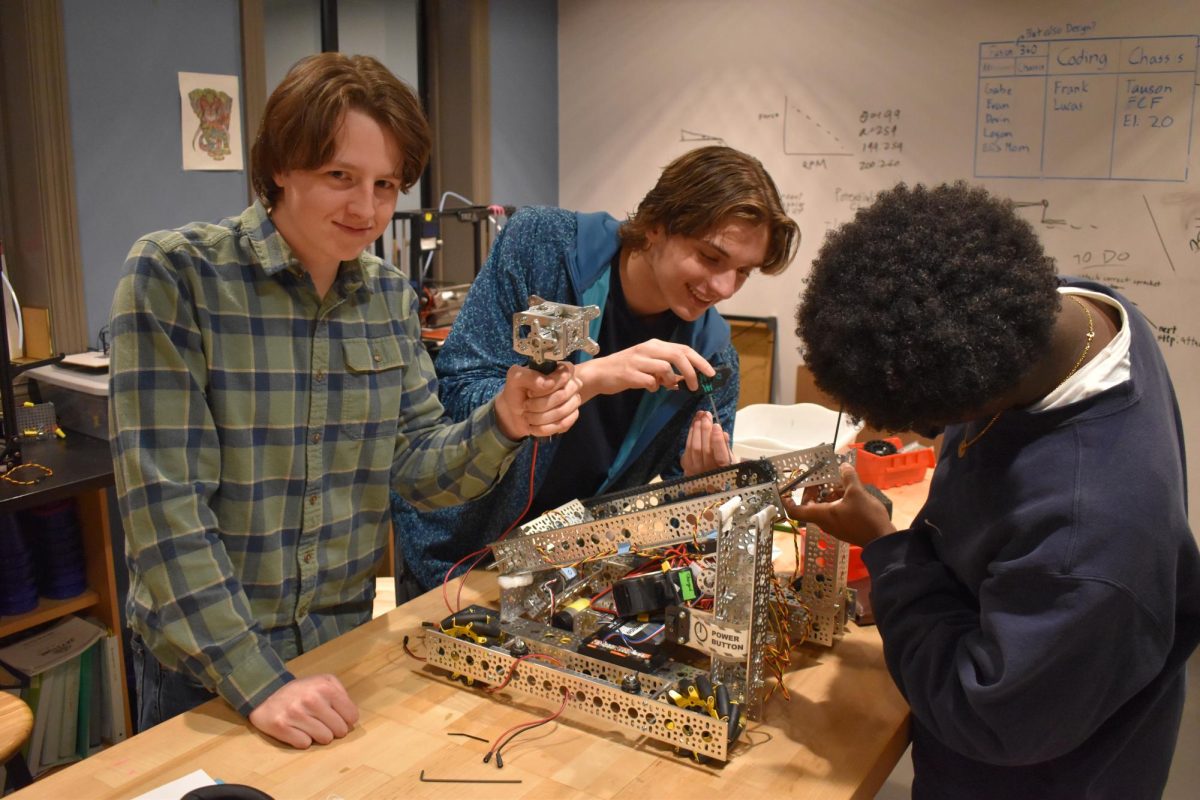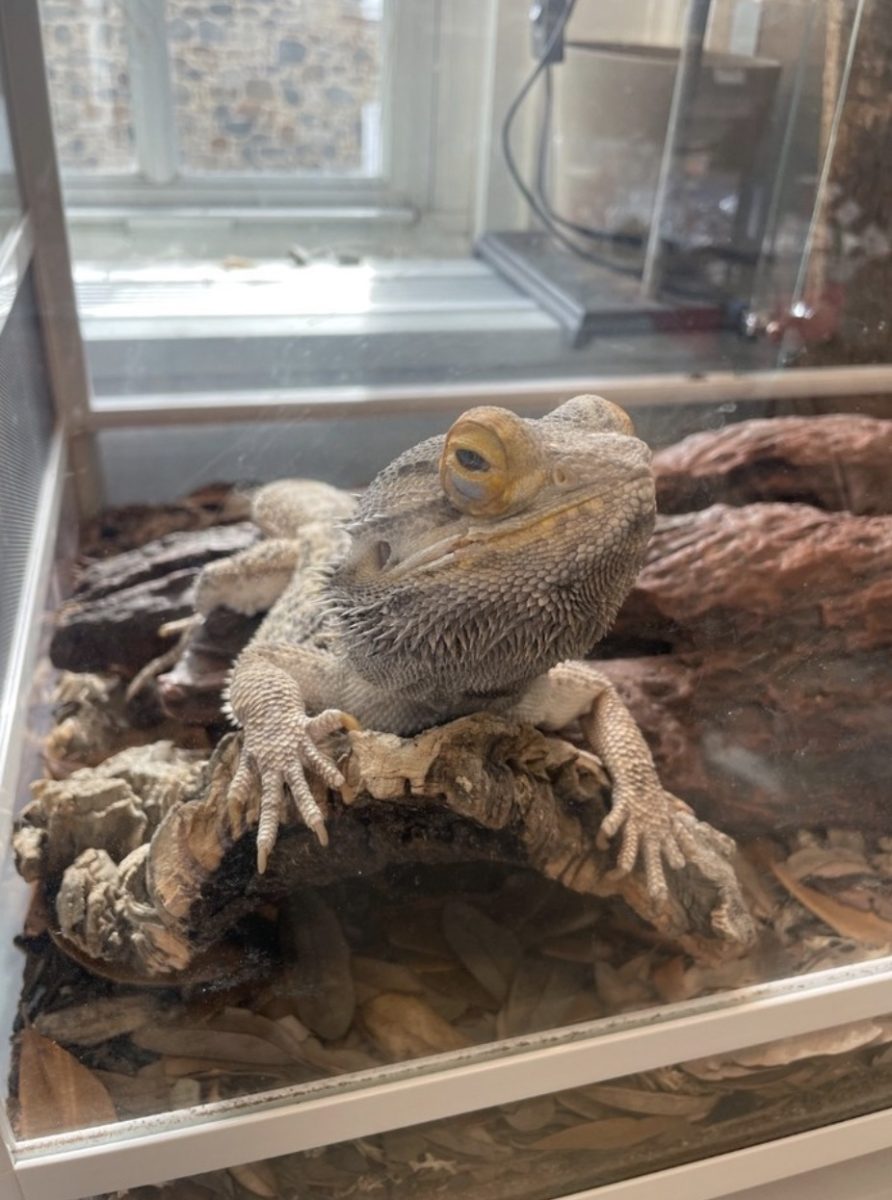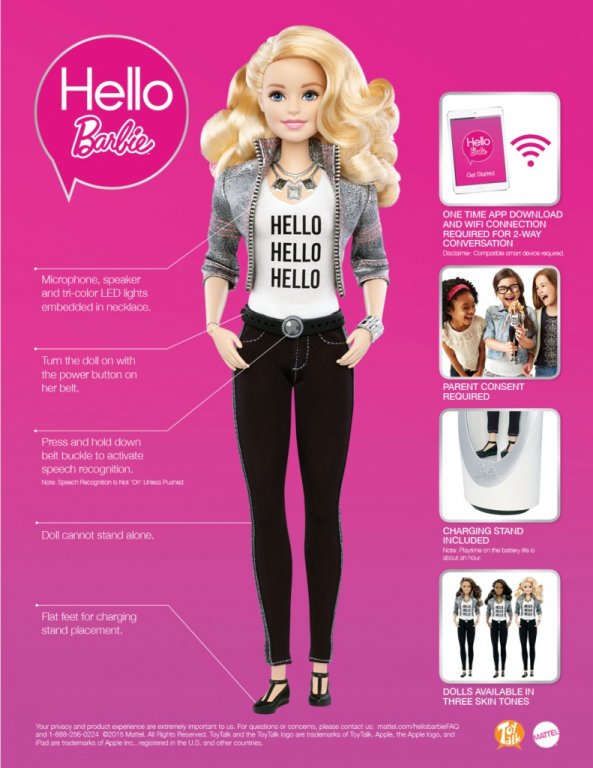“Hello Barbie”: Creepy or Companion?
Holiday Issue: Innovation and the Mind
Some of the features of the new doll
According to a recent study, 99% of girls from ages 3-10 own at least one Barbie. Since its creation in 1959, Barbie has not only been one of the top-selling toys of all time but also a cultural icon. However, despite its historical success, Barbie sales have dropped over the last three years in unsettling acceleration, with sales falling by the double digits for each quarter just in 2014. In an attempt to adapt to modern interest, Mattel is releasing Hello Barbie, a revolutionary doll that mimics human conversation while raising important ethical questions about giving children a robot companion.
The technological capabilities of Hello Barbie create a convincingly realistic, intelligent playmate. From the outside, Hello Barbie looks like all her predecessors; only upon closer study can one see the critical differences: slightly thickened thighs which contain rechargeable batteries, and a USB port in the small of her back. The play begins by pushing Barbie’s belt buckle and speaking into the microphone in her necklace. In a split second, the audio is transmitted via Wi-Fi to the computer servers of ToyTalk, a company specializing in artificial intelligence, where it is fleetly analyzed and sent back to Barbie, who immediately replies with one of her 8,000 scripted and recorded lines, which include conversations, games, and references to popular culture. Barbie’s ability to have long, continuous conversations are the result of the intense labor put into mapping out conversation routes with branches upon branches of potential answers. Her Wi-Fi connection means that creators can constantly add new lines to Barbie, which is especially important in keeping the doll’s cultural references up to date. Try asking her about Taylor Swift. ‘‘She is one of my super favorites right now!”, Barbie would reply with a peppy voice.
Despite her technological prowess, concerns have been voiced regarding the ethics of Hello Barbie, with many raising the frank question, “is Hello Barbie creepy?” One of Barbie’s most unique features is her ability to reference previous conversations from her digitally stored memories. Whatever is said to Barbie is stored in the Cloud, which contains a data repository which makes it seem that Barbie can develop a relationship with a child. ‘‘She should always know that you have two moms and that your grandma died, so don’t bring that up, and that your favorite color is blue, and that you want to be a veterinarian when you grow up,’’ Wulfeck, a ToyTalk employee, explained in an interview with The New York Times. Donovan Aldridge ’18 states, “I know that kind of technology makes the Barbie a really fun and interactive toy, but having access to what children say is a little bit creepy, and at some levels might seem like an invasion of privacy.” The Campaign for a Commercial-Free Childhood recently launched a petition urging Mattel to stop the doll from being sold, protesting the idea that Mattel could hold and store files on all of a child’s intimate conversations with her doll, which could be exploited for marketing. The group’s executive director, Susan Linn voiced, “Kids using ‘Hello Barbie’ aren’t only talking to a doll, they are talking directly to a toy conglomerate whose only interest in them is financial.”
Putting aside the ethics of storing all records of a child’s chatter with her doll, perhaps an even bigger concern held by psychologists centers around the danger of administering robot-like companions to children. Barbie has been notorious for its influence on a girl’s body confidence; but psychologists argue that making Barbie more real will only increase her impact. By creating a robotic companion, even Barbie’s personality is artificialized by programming and public-relations concerns. Some psychologists claim that the 24/7 availability of an ever-cheerful best friend who never annoys, challenges or disappoints creates a severe deterrent to a child developing realistic relationship skills. They suggest that another other fundamental problem is that Hello Barbie substitutes character constructed by technology for the vivid imagination of a child. Hannah Kushner ’17 says, “I think it’s really sad how kid’s conversation and play with Hello Barbie is all about real life, adult things rather than what should be supplied by a kid’s imagination, like fairies and princesses and all that fantasy make-believe.” While maintaining a conversation with the doll is interesting and unique, it substitutes the development of a child’s imagination.
Hello Barbie’s impact on the toy industry is undeniable, the vast technological advancement that competes against artificial intelligences such as Siri is as radical as the new way children interact with their toys. But despite Hello Barbie’s technical successes, its creation raises important ethical questions. While Hello Barbie’s impressive ability to remember important things about a child depends upon her storing memory, people worry whether toy companies should hold the records of all the intimate things a child says to the doll she holds in bed at night.
Likewise, while Barbie serves as a positive, entertaining role model and companion, it is altogether possible that her pre-programmed personality and actions could stunt a child’s utilization of her imagination, an essential skill. Hello Barbie, while a major innovation in the toy industry, starts an important discussion about the introduction of artificial intelligence to society’s most vulnerable audience.



























